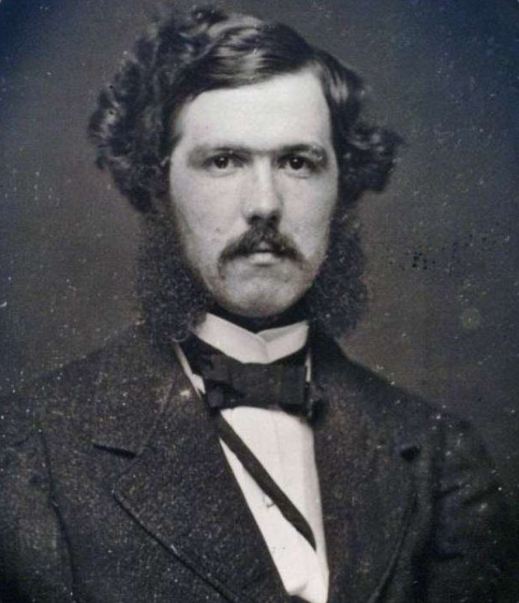On October 5, 1829, Chester Alan Arthur was born to Malvina and Reverend William Arthur, a dedicated Baptist abolitionist preacher, in North Fairfield, Vermont. He was the fifth of nine children and was named after Chester Abell, a physician and a family friend who assisted his birth. His middle name, “Alan,” came from his paternal grandfather.
Eventually, the Arthurs moved from Vermont to New York City because Reverend preached in various towns and villages. Chester Arthur’s political career was shrouded with a rumor that he was born in Quebec, Canada, and not born American, although this allegation was never proven.
The young Chester Arthur attended school in Union Village, New York, and eventually moved up to Union College in Schenectady. Chester Arthur was a member of Phi Beta Kappa and showed particular interest in extracurricular activities rather than his studies. When Chester Arthur graduated in 1848, he studied law while working as a school teacher. While serving as an educator, he climbed up the ladder and served as the principal of different schools in Vermont, Cohoes, and North Pownal in New York.
Later on, he was later admitted to the bar and immediately practiced law in New York City. In 1854, he worked for a prominent law firm and worked with Erasmus D. Culver, a prominent lawyer. He became a significant asset to the law firm, and it was eventually named “Culver, Parker, and Arthur.”
In his early years practicing law, he handled a controversial case when he defended Elizabeth Jennings Graham, an African-American teacher. Graham was discriminated against because of her color on a New York State car. Chester Arthur was won the sensational case, and thanks to this, it led to the desegregation of streetcar lines in New York.
Like any typical American citizen, Chester Arthur served in the army during the American Civil War. In 1860, Chester Arthur worked as the Engineer in Chief of the military staff, and under his leadership, thousands of soldiers were housed in New York. His dedication became his stepping stone to rise to top ranks in a short period. Two years after, he was promoted to Inspector General. Later that year, he served as the Quarter Master and then decided to retire from military service.
After serving in the Civil War, he became closely associated with Senator Roscoe Conkling. He was the faction leader of the Stalwarts and kept a close eye on Chester Arthur’s excellent administrative skills while serving as the Quartermaster General of New York. Also, he was quite impressed with his legal ability. In 1871, with the senator’s recommendation, Chester Arthur was appointed as the Collector of the Port in New York by President Ulysses S. Grant; However, part of his job was to collect kickbacks from custom house employees who were also members of the Republican Party. Roscoe Conkling’s political supporters are awarded government jobs, even though he overstaffed positions because the necessary qualification is loyalty despite these corrupt practices.
When Rutherford B. Hayes was elected in 1877, the president saw that it is crucial that he reduced Roscoe Conkling’s corrupt practices and forced resigned Chester Arthur and others in the New York customhouse. Chester Arthur attempted to ignore the president for quite some time; however, he was finally suspended in July 1878 and returned to practice law.
Chester Arthur was regarded as Roscoe Conkling’s protégé and his mentor during the Republican National Convention in 1880 and attempted to secure Ulysses Grants’ third term as the president delegates turned to James A. Garfield, and Chester Arthur was nominated as vice president under the Republican ticket. Although his nomination was questioned, he appeared unqualified to hold the nation’s second-highest office after working as the customhouse collector and blindly tolerated corruption.
The Republican ticket in 1880 won the election. Six months after James Garfield’s inauguration, he was assassinated. Subsequently, Chester Arthur became the next president of the United States of America.
Chester Arthur proved his loyalty to the political party; however, he demonstrated that he was above partisanship that is why he instituted a political reform in 1883. He signed the Pendleton Act, which established a bipartisan Civil Service Commission to diminish the spoils system and enforced examinations for government employees. This law also expelled kickbacks and instituted promotions based on merit and performance.
Chester Arthur’s administration also expressed its favor to reduce tariffs. He even vetoed the $18 million Rivers and Harbors Act in 1882; although, he supported the Chinese Exclusion Act, which suspends Chinese immigration to the United States for ten years. Chester Arthur also introduced schemes to improve the nation’s financial conditions by doing substantial changes in civil service reforms. Lastly, in his final year as the president, the government acquired a naval coaling station at Pearl Harbor in Hawaii.
Eight months after he stepped down from the White House, he died on November 18, 1886, and was cremated at the Albany Rural Cemetery in New York.
US Presidents | ||

